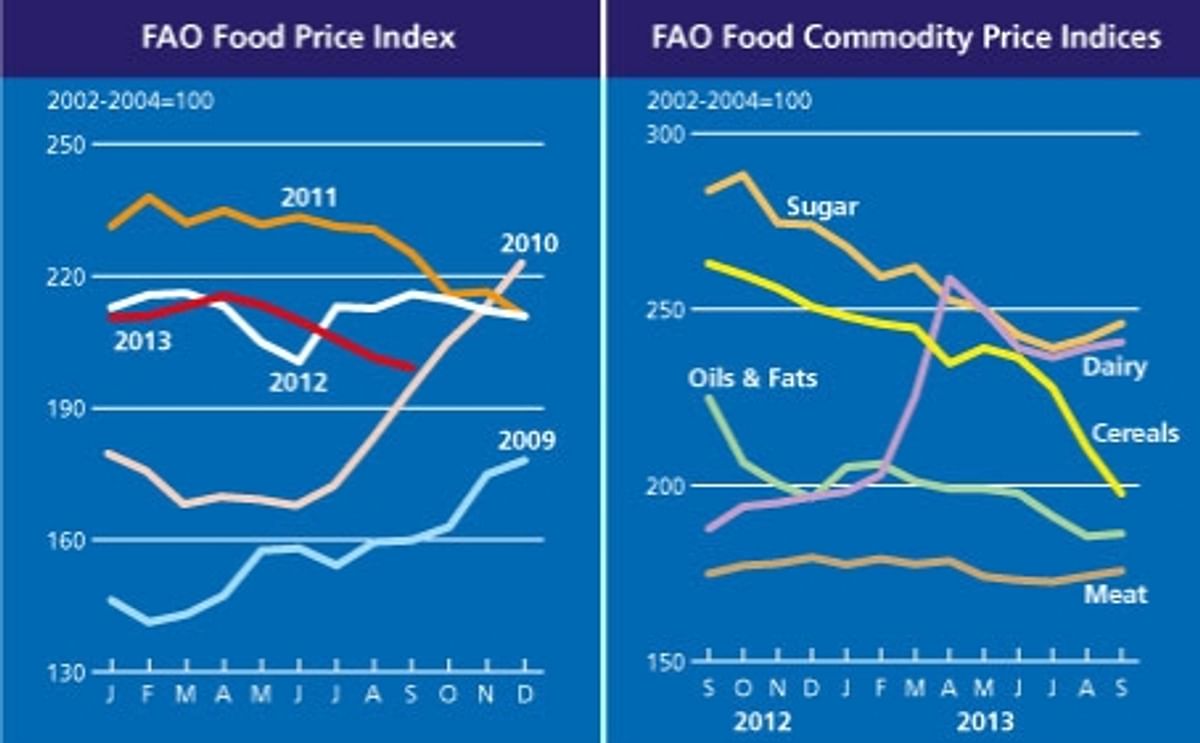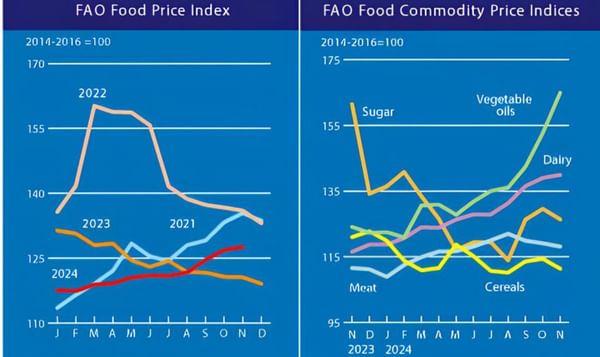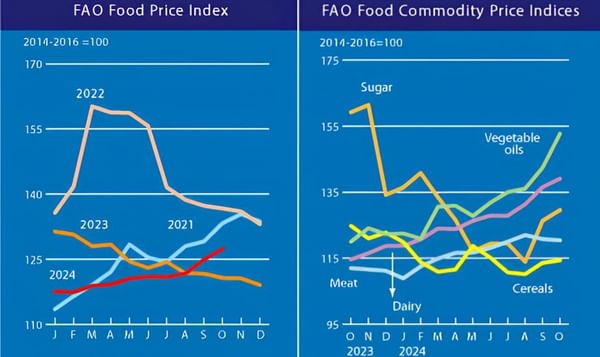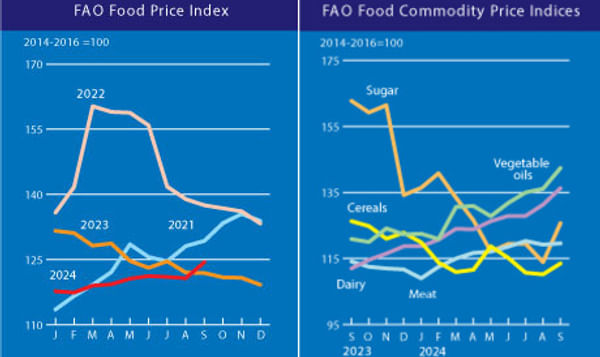The FAO Food Price Index averaged 199.1 points in September 2013, 2.3 points (1 percent) below its August value and down 11 points (or 5.4 percent) since the beginning of the year. The decline in September marked the fifth consecutive decrease in the value of the index and was driven by a sharp fall in the international prices of cereals, whereas prices of all other components of the index, namely dairy, oils, meat and sugar, rose slightly.
The FAO Cereal Price Index averaged 197.7 points in September, down 12.9 points (6 percent) from August and as much as 65 points (or 25 percent) from September 2012. The sharp decline in September follows an already sizeable drop registered in the previous two months, reflecting a generally favourable supply outlook, in particular for maize and rice. International wheat prices which had fallen sharply for three consecutive months, were largely unchanged from August on stronger demand and less favourable production prospects in the southern hemisphere countries.
The FAO Oils/Fats Price Index averaged 186.3 points in September, virtually unchanged from August. Month-on-month, international soyoil values strengthened as a result of further downward revisions for US soybean production – following reports of persistently dry weather in major US growing regions. As to palm oil, export prices initially strengthened on increased export demand only to fall again towards the end of August, reflecting expectations of rising output during the coming months.
The FAO Dairy Price Index averaged 240.7 points in September, 1.6 points (0.7 percent) more than in August. Prices for the individual dairy products that make up the index changed little during the month, but export price ranges narrowed, which pointed to more balanced supply and demand at present. However, compared to September 2012, dairy products remain far more expensive, with the index 28 percent higher.
The FAO Meat Price Index averaged 175.7 points in September, an increase of 1.5 points (0.9 percent) from August. The rise mainly reflected stronger prices for poultry, which grew by 2.8 percent, as prices for bovine and ovine meats were only slightly up, while remaining unchanged for pig meat. The upwards movement in poultry meat prices was a reflection of strong demand and, in some instances, currency movements. In the case of bovine meat, rising demand from Asia, including Japan, contributed to the lifting of prices.
The FAO Sugar Price Index averaged 246 points in September, up 4.3 points (1.8 percent) from August, marking the second consecutive monthly increase. The recent price strength is mainly attributable to unfavorable weather condition hampering harvesting operations in the center-south region of Brazil, the world’s largest sugar producer and exporter. Also, rising demand in India, the world’s largest sugar consumer, due to festive seasons helped provide some short-term upward support to prices. Overall, sugar prices were particularly volatile during the month of September, amid uncertainties on the extent of the anticipated production surplus for the new 2013/14 season.
Source: FAO
Sharp decline in cereal prices drives down FAO Food Price Index

Like to receive news like this by email? Join and Subscribe!
Join Our Telegram Channel for regular updates!
Highlighted Company
Sponsored Content
Sponsored Content
Sponsored Content
Sponsored Content
Sponsored Content











